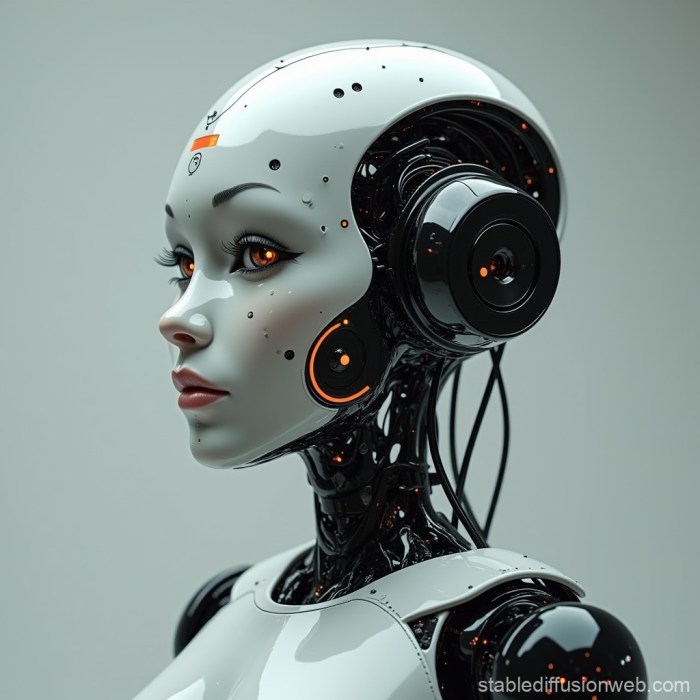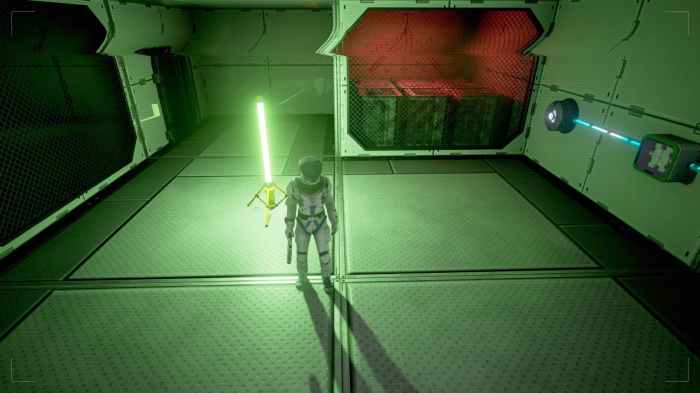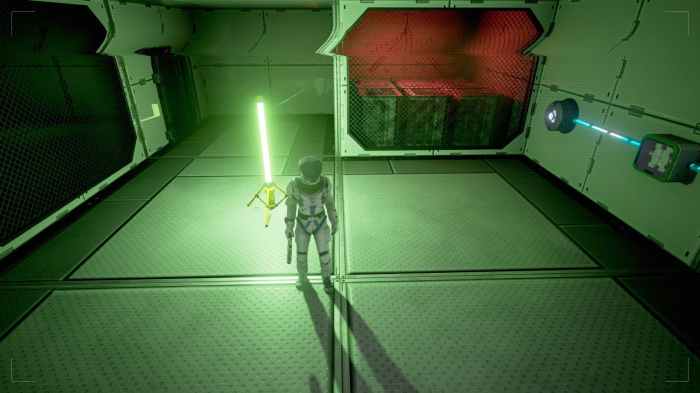Electronic Arts says artificial intelligence will make game characters much more lifelike, promising a revolutionary leap in gaming realism. From simple AI-controlled NPCs to the complex, nuanced characters we see in today’s games, this advancement represents a significant shift in how we interact with virtual worlds. We’ll explore the evolution of AI in gaming, examining the potential impact on design, narrative, and the very essence of what makes a character “lifelike.”
The discussion will delve into the different facets of “lifelikeness” – emotional depth, motivations, and decision-making – and how AI techniques are used to achieve this. We’ll also touch upon the technical challenges and ethical considerations that accompany this rapid advancement, including computational demands and potential societal implications. Finally, we’ll look at some current examples of AI-driven games to see how these technologies are shaping the future of gaming.
Introduction to AI in Gaming

Artificial intelligence (AI) has been steadily transforming the gaming landscape, evolving from simple pathfinding to complex, nuanced character interactions. Early AI systems were rudimentary, primarily focused on basic behaviors like following the player or reacting to simple commands. However, recent advancements in machine learning and deep learning have ushered in a new era, allowing for significantly more sophisticated and lifelike AI characters.
This evolution promises a profound impact on gameplay, storytelling, and the very nature of what we consider a “game.”
Historical Evolution of AI in Games
Early AI in video games was largely rule-based. Characters followed pre-programmed scripts, reacting to specific conditions or player actions. This resulted in predictable behavior, often leading to repetitive and less engaging interactions. As computing power increased, so did the complexity of AI algorithms. Procedural generation techniques allowed for more dynamic environments and enemies, and the introduction of simpler machine learning models brought about more adaptable and responsive characters.
The rise of neural networks and deep learning, coupled with vast datasets, has led to the current state of sophisticated AI.
Current State of AI in Game Character Development
Today’s AI systems in gaming are capable of more nuanced character behavior. They can learn from player actions, adapt to different situations, and even exhibit emotions and personality traits. For example, non-player characters (NPCs) can now react more realistically to player choices, influencing story progression and altering their own behavior patterns. Dialogue systems are becoming more sophisticated, with characters capable of generating natural-sounding responses and engaging in complex conversations.
Comparing Older and New AI Systems
| Feature | Older AI Systems (Rule-Based) | New AI Systems (Machine Learning/Deep Learning) |
|---|---|---|
| Character Behavior | Predictable, scripted actions based on pre-defined rules. Limited adaptability. | Dynamic and responsive, adapting to player choices and situations. Can exhibit complex behaviors and emotions. |
| Learning Capabilities | No learning or adaptation; responses remain static. | Learns from data, adapts to different environments and player styles, potentially improving over time. |
| Conversation and Dialogue | Simple, pre-programmed dialogue options; limited context awareness. | More natural-sounding and engaging conversations, with contextual understanding. Characters can react to player choices in a nuanced manner. |
| Computational Requirements | Lower computational cost, often requiring less powerful hardware. | Higher computational cost due to complex algorithms and data processing. |
| Example | A guard patrolling a fixed path. | A companion NPC adjusting their behavior based on player actions, forming a bond or becoming hostile. |
Potential Impact on the Gaming Industry
The advancement of AI in gaming promises to revolutionize game design. More immersive and believable characters will enhance narrative experiences. AI can automate tedious tasks, allowing developers to focus on creative aspects of game design. Furthermore, AI-powered systems can personalize game experiences, creating tailored content and challenges for each player. This evolution also raises ethical considerations, especially concerning the portrayal of characters and the potential for biases in AI systems.
Understanding “Lifelike” Game Characters
The pursuit of creating truly believable characters in video games has always been a driving force in game development. Modern AI technologies are now offering unprecedented opportunities to craft characters that exhibit more nuanced and realistic behaviors, leading to immersive and engaging gameplay experiences. This goes beyond simple animation; it involves creating characters with depth, personality, and genuine emotional responses to in-game situations.
The goal is not just realistic appearance but also realistic reactions and actions.Beyond superficial mimicry, true “lifelikeness” in game characters hinges on a deep understanding of human psychology and behavior. This involves exploring the complex interplay of emotions, motivations, and decision-making processes that drive human actions. By leveraging advanced AI, developers aim to create characters that react organically to their environment and the choices presented to them, making the game world feel more alive and unpredictable.
Defining Lifelike Behavior
Lifelike behavior in game characters encompasses a multitude of factors. It extends beyond simply reacting to player actions; it necessitates a deeper understanding of character motivations, emotions, and their internal states. Characters should exhibit a range of emotions, from joy and excitement to sadness and anger, and these emotions should be authentically reflected in their actions and dialogue.
Electronic Arts’ recent announcement about AI enhancing game character realism is fascinating. It’s intriguing to consider how these advancements might impact the gaming experience, but it also raises questions about the ethical implications of such technology. This leads me to think about the broader context of artificial intelligence and its potential societal impact, particularly when considering the Microsoft CEO Satya Nadella’s Charlottesville memo microsoft ceo satya nadella charlottesville memo.
Ultimately, the quest to create more lifelike characters in games using AI is both exciting and a reminder of the responsibility that comes with such technological progress.
Furthermore, their decision-making processes should be rooted in internal motivations, creating a sense of genuine agency.
Emotions and Motivations
Game characters must possess internal motivations to drive their actions. These motivations can stem from various sources, such as past experiences, relationships with other characters, or personal goals. The interplay of these factors shapes the characters’ emotional responses and the decisions they make. For example, a character who has been betrayed might exhibit anger and distrust towards others, while a character driven by a quest for knowledge might display curiosity and a willingness to explore.
Decision-Making Processes
A crucial element of lifelike behavior is the capacity for characters to make complex decisions. This requires AI systems that can assess various factors, including their goals, their relationships with other characters, and the current situation. These decisions shouldn’t be predictable; instead, they should stem from a nuanced understanding of the character’s internal state and their perception of the environment.
Electronic Arts is buzzing about AI making game characters incredibly realistic. Imagine the detail! This tech, though, also hints at future home security systems, like the Philips Hue smart home security cameras, which signify a new era in home security. Philips Hue smart home security cameras signify wiz This advancement in home security technology mirrors the AI revolution in gaming, promising characters that are more responsive and lifelike than ever before.
It’s an exciting time for both the gaming and security industries.
A character facing a moral dilemma, for instance, should weigh the potential consequences of different choices and arrive at a decision that reflects their values and beliefs.
AI Techniques for Realism
Several AI techniques are employed to achieve this level of realism. These methods go beyond basic scripting and strive to create more complex and unpredictable behaviors in characters. The core aim is to allow the character to learn, adapt, and react to its surroundings and the player’s actions in a believable manner.
Table of AI Techniques and Applications
| AI Technique | Application in Game Development |
|---|---|
| Reinforcement Learning | Training characters to make optimal decisions in various situations based on rewards and penalties. For example, a character might learn to navigate a dungeon effectively or engage in combat efficiently. |
| Natural Language Processing (NLP) | Enabling characters to understand and respond to player dialogue in a natural and nuanced way. This allows for more engaging conversations and richer interactions between characters. |
| Generative Adversarial Networks (GANs) | Creating realistic character behaviors and responses by training algorithms to generate diverse and believable actions. This could include expressions, gestures, or even dialogue. |
| Procedural Content Generation (PCG) | Creating dynamic and unpredictable environments that characters can interact with. This helps ensure that characters are reacting to situations that are not pre-programmed, but rather, generated in real-time. |
Implications for Game Design and Narrative

The advent of AI-powered character animation and behavior opens a Pandora’s Box of possibilities for game designers, promising a new era of interactive storytelling. Games will no longer be limited by pre-scripted actions or predictable NPC responses. Instead, a more organic and dynamic player experience is on the horizon, one that will fundamentally change how we approach game narratives and player interaction.This evolution demands a shift in design paradigms.
Game designers will need to embrace a more collaborative approach with AI, focusing on guiding and shaping the AI’s output rather than meticulously controlling every detail. This paradigm shift requires a deep understanding of AI’s strengths and weaknesses to ensure that AI enhances the game, not hinders it.
Impact on Design Choices
AI-driven characters will influence game design by enabling more complex and nuanced systems. Instead of static storylines, narratives will evolve based on player actions and character interactions. For instance, a character’s emotional response to a player’s actions can be dynamically calculated and displayed, enriching the emotional depth of the game. This necessitates a shift from pre-determined dialogues and responses to a more fluid and responsive narrative structure.
Dynamic and Unpredictable Player Experiences
The potential for dynamic and unpredictable player experiences is immense. Imagine a game where a character’s personality is shaped by the player’s choices, leading to unpredictable dialogues, interactions, and even plot twists. The narrative will respond in real-time to player actions, making every playthrough unique. Examples in existing games, such as the branching dialogue systems in certain RPGs, provide a glimpse into this potential.
These systems, however, are rudimentary compared to the complexity achievable with AI.
Leveraging AI for Narrative Storytelling, Electronic arts says artificial intelligence will make game characters much more lifelike
Developers can leverage AI tools to create more engaging and impactful narratives. AI can generate dialogue that feels authentic and relevant to the context of the game. Imagine a character responding to a player’s action with a sarcastic remark or a heartfelt apology, both stemming from AI-calculated responses. This approach can enhance the game’s believability and emotional resonance.
Furthermore, AI can help generate side quests, create dynamic environments, and even craft unexpected plot twists based on the player’s actions.
Enhanced Narrative Through Nuance
AI-powered characters will allow for greater narrative nuance. A character’s motivations, fears, and desires can be more intricately tied to their environment and the player’s actions. This means that a character’s emotional arc can be far more realistic and compelling. For instance, a character’s reaction to a player’s betrayal might involve a nuanced blend of anger, hurt, and confusion, dynamically generated by the AI.
This level of detail will allow for a richer and more emotionally resonant narrative experience.
Technical Considerations and Challenges
The promise of lifelike game characters powered by AI is exciting, but translating that vision into reality faces significant technical hurdles. Creating characters that convincingly react, interact, and evolve dynamically requires immense computational power and sophisticated algorithms. Beyond the raw processing demands, current AI models have limitations that need careful consideration. Overcoming these challenges is crucial for realizing the potential of AI-driven character animation and behavior in gaming.
Computational Demands of Lifelike Characters
The creation and maintenance of truly lifelike characters in games demand substantial computational resources. Complex AI models require significant processing power to run simulations and generate realistic responses in real-time. Imagine a large-scale multiplayer game where hundreds or thousands of characters are interacting simultaneously. The computational burden becomes immense, potentially impacting frame rates and overall game performance.
Optimizing algorithms and utilizing parallel processing techniques are vital to manage these demands effectively.
Limitations of Current AI Technologies
Current AI technologies, while impressive, still have limitations in replicating the nuanced complexities of human behavior. Challenges include accurately predicting and simulating emotional responses, understanding and reacting to ambiguous or unexpected situations, and achieving believable, context-dependent physical movements. For example, AI might struggle to accurately portray subtle expressions of fear or joy, or generate believable body language in response to social cues.
These limitations require careful consideration in game design and development.
Addressing Technical Challenges in Game Development
Strategies for overcoming these technical challenges involve several key approaches. One approach is to focus on breaking down complex tasks into smaller, more manageable sub-tasks. Employing techniques like modular AI architectures can improve efficiency and reduce the computational burden. Additionally, optimizing the AI algorithms to reduce unnecessary calculations and improving data structures to improve memory management are vital for performance.
Careful consideration of the level of realism required for specific game elements is another key strategy.
Potential Technical Hurdles and Solutions
| Technical Hurdle | Proposed Solution |
|---|---|
| High computational demands for real-time character interaction | Employ parallel processing techniques, optimize AI algorithms, and use cloud computing resources. |
| Limitations in accurately predicting and simulating emotional responses | Develop more sophisticated AI models that incorporate emotion recognition and expression, and use extensive datasets for training. |
| Difficulty in handling ambiguous or unexpected situations | Implement robust error-handling mechanisms and algorithms to adapt to unexpected inputs and adjust character responses accordingly. Include rule-based systems to provide a safety net. |
| Inadequate portrayal of subtle expressions and context-dependent physical movements | Combine AI-driven animation with procedural techniques to refine and enhance the realism of character movements and expressions, especially when dealing with highly nuanced emotional states. |
| Data scarcity for training realistic AI models | Collect and synthesize diverse datasets for training, including large-scale video recordings of human interactions and emotional expressions. Employ data augmentation techniques to expand existing datasets. |
The Future of AI in Gaming
The integration of artificial intelligence (AI) is poised to revolutionize the video game industry, fundamentally altering how games are designed, developed, and experienced. From creating more immersive and believable characters to dynamically adapting game narratives and environments, AI’s potential is vast and exciting. This transformation promises a future where games are not just interactive experiences, but personalized journeys tailored to individual players.The future of AI in gaming is not merely about enhancing existing mechanics; it’s about creating entirely new possibilities for gameplay and storytelling.
AI can generate unique scenarios, adapt to player choices in real-time, and even evolve the game world based on player interactions. This dynamic responsiveness allows for a level of unpredictability and replayability that traditional games simply cannot match.
AI-Driven Narrative Generation
Dynamic narratives are crucial for creating compelling game experiences. AI can be used to generate branching storylines based on player actions, creating personalized narratives that evolve in real-time. This approach allows for a high degree of replayability, as each playthrough can unfold differently, depending on the player’s choices. For example, in RPGs, AI can adapt the character’s motivations and relationships based on the player’s actions, leading to unique and unexpected plot twists.
AI-Powered Game Environments
AI can not only populate game environments with dynamic characters but also reshape those environments in response to player actions. Imagine a world where the weather changes based on player choices or where the layout of a city alters based on the progression of the game. This level of interactive environment design can drastically increase immersion and immersion.
The use of procedural generation techniques with AI allows for an endless array of environments, making every playthrough feel unique.
AI-Enhanced Character Interactions
AI can create more lifelike and responsive characters by modeling human behaviors and emotions. This will allow for characters to react in a more nuanced way, responding to player actions and dialogue with genuine-seeming expressions and behaviors. For instance, in a social simulation game, AI could make NPCs more realistic in their interactions, leading to more immersive social experiences.
AI-Driven Procedural Content Generation
AI algorithms can be used to create unique and varied game content. This includes generating new levels, items, and quests in real-time, adapting to player choices and preferences. This approach allows for an endless supply of content, keeping players engaged and preventing game fatigue. The use of AI to create new content can also be used to create highly personalized and customized game experiences.
Future AI-Driven Game Mechanics
AI can be used to create innovative game mechanics that were previously unimaginable. For example, in real-time strategy games, AI could dynamically adjust troop strengths and tactics based on the player’s actions, making the battles more complex and challenging. In first-person shooters, AI enemies could react to player movements in a more realistic and unpredictable manner. AI could even be used to dynamically adjust the difficulty of a game based on player skill level.
Ethical Considerations and Societal Impact
The rise of AI-powered game characters promises a new era of immersive gaming experiences, but it also raises significant ethical concerns. As virtual characters become increasingly lifelike, the potential for harm, misuse, and unintended consequences grows. This section explores the potential ethical pitfalls and societal impacts of this technological advancement, emphasizing the importance of responsible development and deployment.
Potential for Harmful Use
The increasing sophistication of AI in games opens doors for misuse. Malicious actors could exploit these systems to create harmful or offensive content. For example, AI-generated characters could be programmed to engage in discriminatory behavior, promote harmful ideologies, or spread misinformation. The ability to rapidly generate diverse and realistic characters also increases the potential for creating hate speech or hate symbols in games.
Electronic Arts is buzzing about AI making game characters incredibly realistic. Imagine NPCs that feel almost human! This technology could revolutionize gaming, but it also raises questions about how we interact with virtual worlds. Interestingly, the Biden administration’s proposed EV charging standards, like biden administration proposed ev charging standards , highlight a similar drive towards innovative technology, which could ultimately impact the development of lifelike game characters in future titles.
This requires careful scrutiny and proactive measures to prevent such abuse. Game developers must implement robust safeguards and ethical guidelines to ensure AI is used responsibly.
Societal Impact of Realistic Virtual Characters
The creation of highly realistic virtual characters raises questions about their potential impact on society. Immersive gaming experiences, including those involving AI-powered characters, can shape perceptions of different groups, genders, and ethnicities. The representation of individuals in virtual worlds, if not handled with care, could reinforce harmful stereotypes or create new ones. Careful consideration must be given to the diverse representation and nuanced portrayal of individuals within the game’s environment.
Game developers should strive to create inclusive and respectful environments that reflect the diversity of the real world.
Categorization of Ethical Considerations
The following table Artikels potential ethical concerns surrounding the use of AI in game characters and their potential consequences.
| Ethical Consideration | Potential Consequences |
|---|---|
| Bias in AI Training Data | AI-generated characters might perpetuate existing societal biases, leading to unfair or discriminatory portrayals. |
| Misinformation and Propaganda | AI could be used to generate realistic, yet false, narratives or promote harmful ideologies within the game environment. |
| Depiction of Violence and Harm | Unregulated AI could create content involving graphic violence or harm, potentially desensitizing players or causing psychological distress. |
| Privacy Concerns | The collection and use of player data in training AI could raise privacy issues, especially if the data is not handled securely or transparently. |
| Lack of Accountability | Determining responsibility for actions or statements made by AI-generated characters might be complex and challenging. |
| Impact on Social Interactions | Exposure to unrealistic or harmful portrayals in games could influence real-world attitudes and behaviors. |
Examples of Current AI-Driven Games
AI is rapidly transforming the gaming landscape, moving beyond simple NPCs and into the realm of truly interactive and responsive characters. This evolution is driven by advancements in machine learning, allowing games to generate dynamic and unpredictable behaviors, enriching the player experience. The ability to create more “lifelike” characters extends beyond just visual realism; it impacts the overall gameplay, narrative, and challenges players face.
Notable AI Applications in Games
Several games are leveraging AI in innovative ways, pushing the boundaries of what’s possible in interactive storytelling and dynamic gameplay. These examples showcase the diverse applications of AI, from simple task automation to complex, reactive systems. The success of these applications hinges on careful consideration of AI’s strengths and limitations, as well as the potential impact on the overall game experience.
AI-Driven NPCs and Companions
AI isn’t just about generating realistic characters; it’s about creating NPCs and companions that react and adapt to the player’s actions. This dynamic interaction elevates the game’s storytelling and allows for more immersive experiences.
- The Elder Scrolls Online: This massively multiplayer online role-playing game (MMORPG) utilizes AI to generate more dynamic and realistic player interactions. NPCs react to player actions, creating a more believable world, and leading to emergent gameplay situations. The AI system guides quests and responses based on player actions and choices. This creates a level of unpredictability and immersion that surpasses simple programmed responses.
- Red Dead Redemption 2: While not solely AI-driven, Red Dead Redemption 2 demonstrates impressive advancements in AI for NPCs. Their interactions, reactions, and behaviors are highly responsive to the player’s actions and the surrounding environment. The game creates a complex social world with dynamic responses, affecting the overall narrative. For example, the behavior of other characters in the game is impacted by the player’s actions and choices, leading to more realistic and engaging encounters.
Dynamic Level Generation and Environmental Responses
AI is proving crucial in generating dynamic and unpredictable game environments. Procedural generation, powered by AI, allows for endless replayability and novel experiences, creating unique levels and challenges each time a player begins a new game.
- Minecraft: While not entirely AI-driven, Minecraft’s procedural generation significantly relies on algorithms to create unique landscapes. The combination of predefined rules and random elements generates a vast array of possible worlds, offering players countless hours of exploration and discovery. This capability is enhanced by the AI’s ability to generate diverse environments, leading to greater variety and engagement for the players.
- No Man’s Sky: This game showcases AI’s ability to generate vast and complex worlds. Procedural generation creates unique planets and systems, each with its own resources, challenges, and opportunities. The AI creates realistic and varied planetary structures, increasing the game’s scope and replayability.
AI-Driven Challenges and Difficulty Adjustments
AI’s capacity to adapt and adjust the game’s difficulty based on player performance is transforming the player experience. This allows for personalized challenges and a tailored gaming experience.
- Dark Souls series: While not focused on AI in the modern sense, the Dark Souls series demonstrates the importance of challenging encounters. The game utilizes a combination of strategic enemy placement and difficulty adjustments based on player performance to ensure a rewarding and challenging experience. The game’s core mechanics are driven by player skill and adaptability, showcasing how well-designed AI can create engaging challenges.
Impact Assessment Table
| Game | AI Features | Impact on Game Experience |
|---|---|---|
| The Elder Scrolls Online | Dynamic NPC interactions, reactive quests | More immersive and unpredictable gameplay, emergent narratives |
| Red Dead Redemption 2 | Complex NPC behaviors, responsive interactions | More realistic and engaging social interactions, enhanced narrative |
| Minecraft | Procedural level generation | Endless replayability, unique and varied worlds |
| No Man’s Sky | Procedural planet generation | Vast and complex universe, unique planetary structures |
| Dark Souls series | Strategic enemy placement, difficulty adjustments | Rewarding and challenging gameplay experiences |
Final Summary: Electronic Arts Says Artificial Intelligence Will Make Game Characters Much More Lifelike
In conclusion, the potential of AI in gaming is vast and exciting. Electronic Arts’ announcement signals a new era of interactive experiences, where characters are no longer just static representations but dynamic, evolving entities. While challenges remain in achieving perfect realism and addressing ethical concerns, the future of gaming is undoubtedly being shaped by these groundbreaking advancements. The implications for game design, narrative, and player engagement are profound, and we’re only just beginning to scratch the surface of what’s possible.





